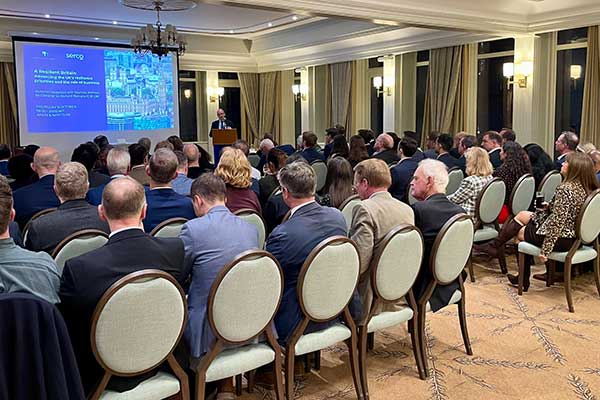Resilience First in collaboration with legal expert’s Russell-Cooke and architect’s Perkins&Will have published today a new practical guide on ‘Flexible Working: What happens now?’ This guide looks at the new hybrid or distributed way of working where we mix the office and home environments, and considers all the implications this will entail.
Introduction
With the vaccine programme successfully underway and the government’s roadmap out of lockdown now published, businesses around the UK are now reviewing their return-to-work strategies and the adaptations they would have to introduce as result of addressing the impacts brought about by the pandemic.
Throughout lockdown, office workers across the country have settled into their new work-life balance patterns. Some are enjoying this new approach, whilst others are pining for when they could return to the office and the social aspects it entails.
Salary cuts
Research has shown, however, that adopting this ‘new’ normal approach to working could lead to changes in work contracts, including salaries for employees who elect for more off-site working. Glassdoor estimates that software engineers and developers who chose to work away from offices in San Francisco, for instance, could face salary cuts of around a quarter.
Reimaging the workplace
It focuses on four aspects of the new working environment, namely People, Place, Processes and Tools and provides insights into, and considerations for, managing the new relationship between employers and employees. The guide also offers some markers on how to move forward – not just build back better – and introduces new ways of working in, around, and from the office wherever that may be.
Comradeship and creativity
Launching the guide Simon Collins, Chair, Resilience First, said:
“The realisation is becoming widespread that traditional office working will not be the same as we emerge from the pandemic. Offices cannot expect to have full occupancy as employees are no longer expected to be physically present and many have grown accustomed to, and value, home working. Yet, the office environment has many advantages both for companies trying to sustain team building and those who appreciate working closely for comradeship and creativity.”
Emotional and physical wellbeing
Russell-Cooke partner and health and safety specialist Kizzy Augustin said:
“Now that we know the roadmap for the return to ‘normality,’ employers need to consider what the new normal will look like for those based in offices. Some employees have found home working has given them a new work-life balance they want to keep but others have felt isolated and poorly managed or have been working in inadequate conditions. It is vital that employers consider the physical and mental health of their workforce when reviewing their plans for a return to work and whether a hybrid approach of both office and home/remote working is the best approach for their business. They have a duty to do so. This report is an important run-down of all the issues that need to be taken into account and we welcome an open discussion as we move into a new working mode.”
Robert Hall, Executive Director, Resilience First, said:
“The guide is timely in the light of the anticipated bounce back in the economy following the vaccine roll out and increased testing. People realise that any return to the office will see a mix of days of off-site and on-site working. Getting the balance right will depend on employee roles and employer expectations. Some will see reduced office capacity with HSBC announcing it will vacate 40% of its office space in the coming years, for example. This guide helps both employees and employers understand the challenges ahead.”
Notes:
- The full guide can be viewed on the Knowledge Hub which is available to members only.
- Guide to Part One: Flexible Working – The Ups and Downs, can be viewed here.



